Find the perfect place in your kitchen for this essential small appliance. See seven ways you can integrate a microwave into your kitchen layout.
The microwave is an essential kitchen appliance that helps streamline meal prep and fit cooking into busy schedules. This fast, efficient unit adds a ton of convenience to the kitchen, but it’s important to find the proper placement for the microwave to maximize its advantages. Simply setting the appliance on your countertop occupies a sizable footprint, taking up valuable workspace that could be otherwise used for prepping ingredients or storing easy-access kitchen tools. To reclaim some of that valuable countertop space, consider integrating your microwave into your kitchen layout to achieve a more organized, functional design.
There are many alternatives to storing your microwave on the counter that are much more efficient but no less accessible. Options include building the microwave into cabinetry, installing it inside an island, recessing the unit into the wall, and more. These space-saving ideas for integrating a microwave demonstrate how to move the small appliance off the countertop without losing its convenience. Each method has pros and cons, so consider your needs carefully when deciding which integrated microwave idea works best for your kitchen.
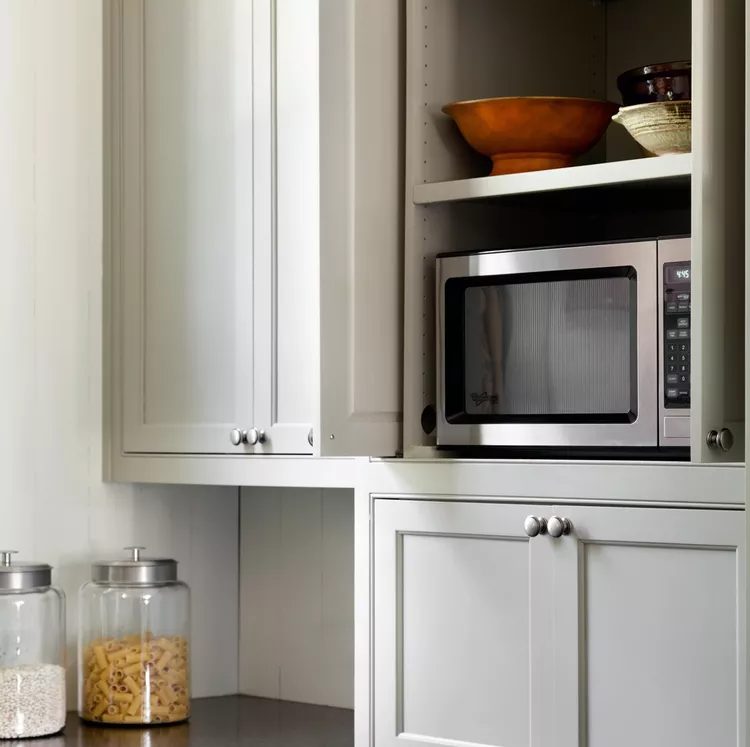
1. Set a Microwave into Cabinetry
Countertop models can be tucked into a shelf or opening in the cabinetry for a built-in look that allows you to move the microwave off the work surface. For safety, it’s best to find a location that offers landing space below. The more tightly the microwave fits into the space, the more streamlined it looks.
Pro: Building cabinetry around the microwave or setting the unit inside a cabinet typically requires no demolition, making it a relatively easy and inexpensive option.
Con: Because there will probably be gaps between the microwave and the cabinetry, you might not get the flush look of a fully integrated, custom unit.
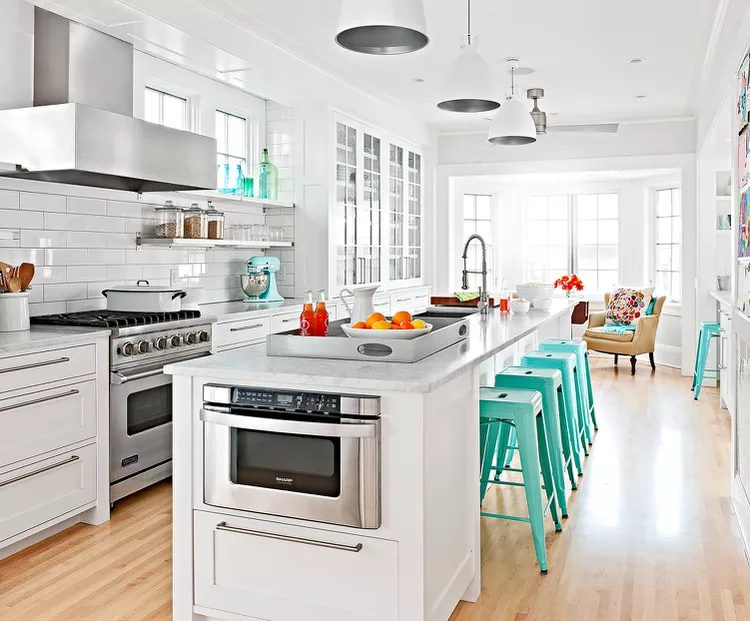
2. Install a Microwave as a Drawer
For a discrete look, consider a drawer-style microwave built into an island or elsewhere below the countertop. When tucked below the counter, a drawer-style microwave offers easy access, readily available landing space for food going into or coming out of the microwave, and no demands on counter space. This configuration features a stylish, integrated appearance and is ideal for kitchens with limited counter space or for island installations. Instead of reaching up to the counter or higher, users of any height can easily access this oven.
Pro: Because of their location, drawer-style microwaves provide easier access than countertop microwaves and over-the-range models while saving counter space. This configuration is the safest for all users and lends a high-end look to the kitchen.
Con: Drawer-style microwaves tend to be more expensive than countertop models and have more limited installation options.

3. Mount a Microwave Over the Range
This arrangement offers a solution for kitchens that are pressed for space. Installing an over-the-range microwave not only integrates the microwave with upper cabinets but also groups the appliance with the range below for a streamlined look. Although many over-the-range microwaves include light and ventilation for the range below, the ventilation does not perform as well as a dedicated range hood and is not enough for pro-style ranges and cooktops.
Pro: Over-the-range microwaves save valuable work space and are adequate substitutes for range hoods in most residential kitchens.
Con: These units are usually more expensive than countertop models and might require professional installation. Reaching over a hot range or cooktop to access the microwave also raises safety concerns.
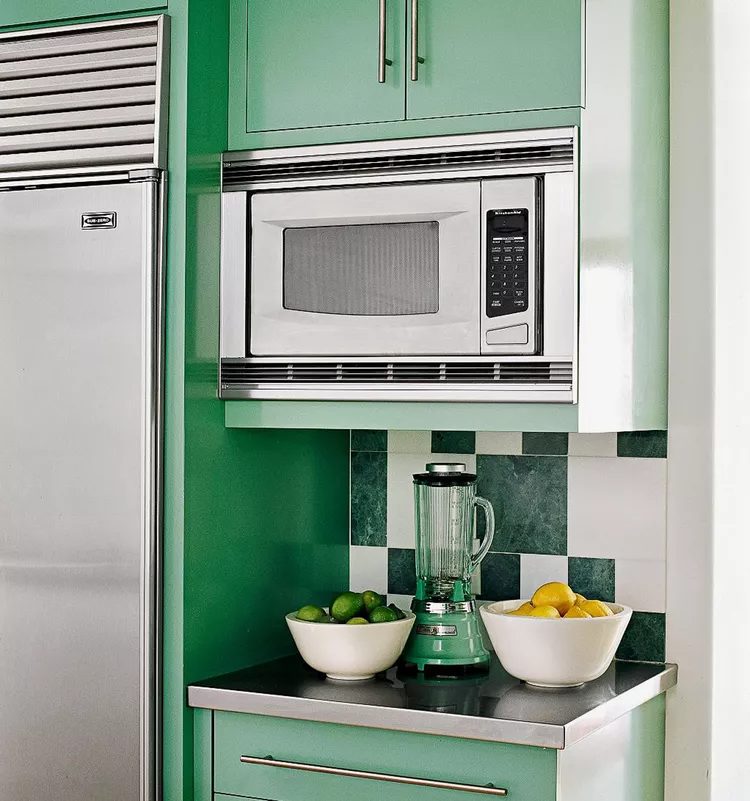
4. Add a Trim Kit Around the Microwave
Similar to building cabinetry around your microwave, this solution is finished with a trim kit that fills the gaps to create a more integrated look. Most microwaves can be fitted with a trim kit from the oven manufacturer or from another supplier.
Pro: The microwave is fully integrated into the cabinetry, offering a custom look.
Con: A trim kit adds to the cost and requires extra installation expenses.
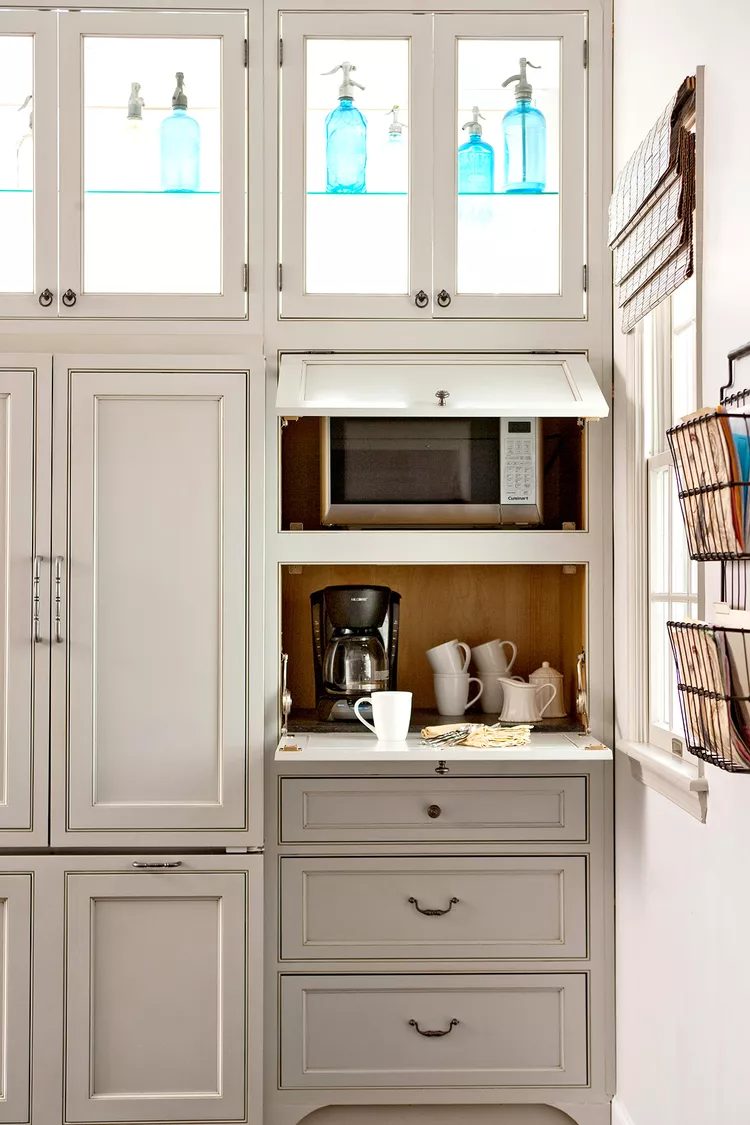
5. Hide a Microwave Behind a Cabinet Door
Placing the microwave inside a cabinet or appliance garage hides the microwave behind a door that blends with the rest of the cabinetry when the appliance is not in use. In small kitchens, tambour doors work especially well because the door lifts up and out of the way for easy access to the microwave.
Pro: This solution offers the benefit of immediate landing space without having to keep the microwave visible on the countertop.
Con: Adding a door comes with extra cost and installation requirements.
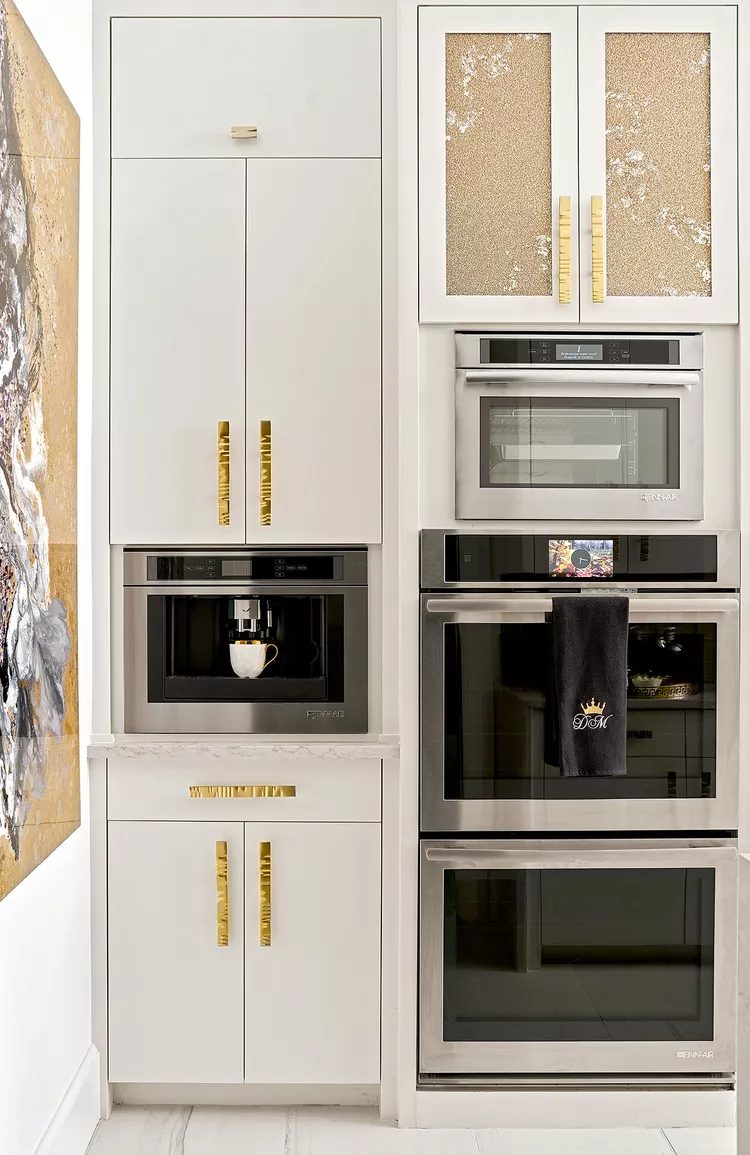
6. Integrate a Microwave with Other Appliances
It makes sense to have cooking appliances in the same location, so group the microwave with a wall oven or other appliances. Selecting a trim kit that matches other appliances helps the microwave blend in.
Pro: Since you’re already using the wall for appliances, no additional countertop space is wasted.
Con: This solution requires appliances that match and can be grouped attractively and practically with your microwave.
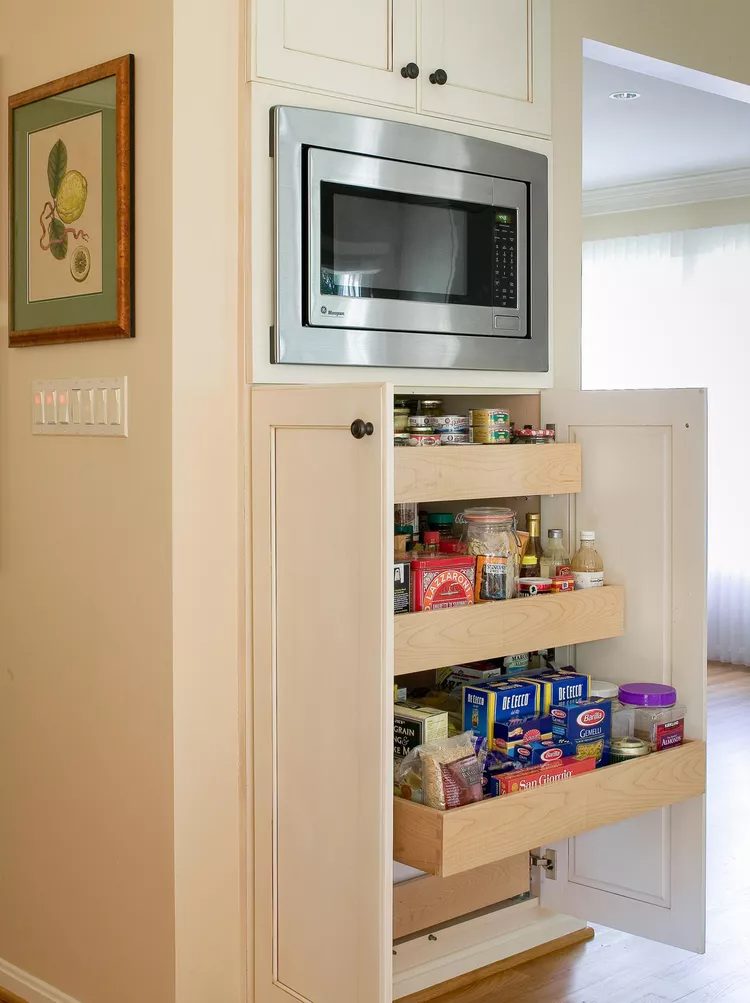
7. Recess a Microwave into a Wall
Depending on the kitchen floor plan, you might be able to recess the microwave into space stolen from a closet, garage, or empty area. Before cutting into a wall, ask a builder or remodeler to check the structure of the wall and add reinforcement if necessary.
Pro: The microwave is flush with the wall for a custom look that doesn’t require any counter or cabinet space.
Con: Some demolition and construction will be needed.


